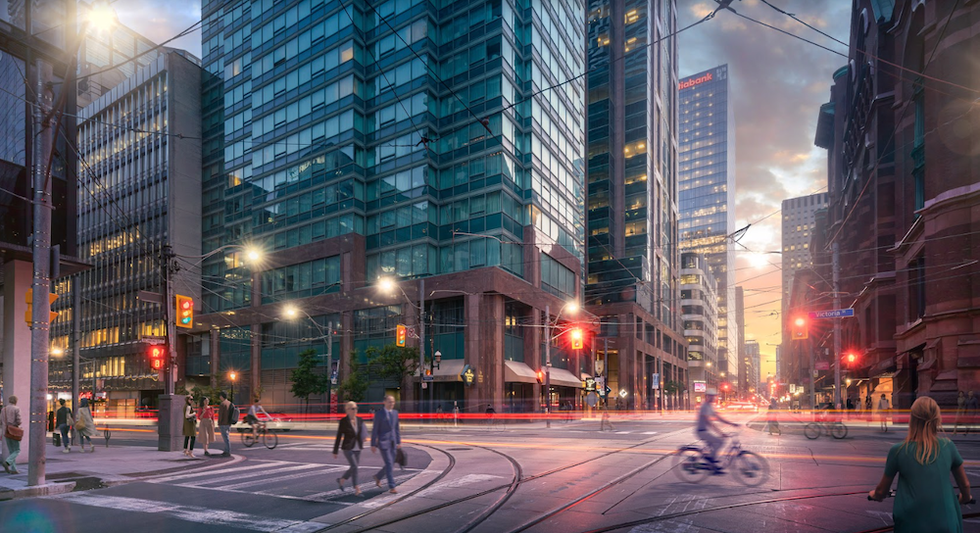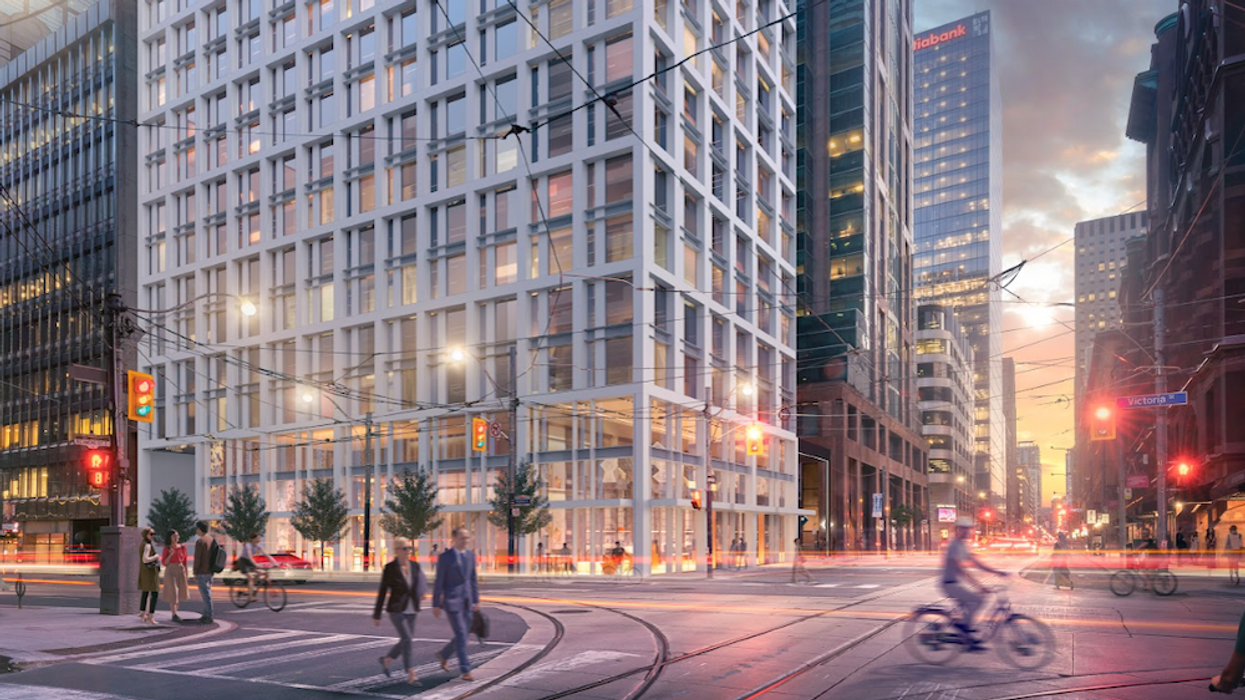Since 1989, the Cambridge Suites Hotel has been a fixture of Toronto’s Financial District. Located at the corner of Richmond and Victoria Streets, it has been known as a long term stay destination for travelling executives, easily spotted for its striking -- if dated -- postmodern green glass facade.
Now, a new adaptive reuse development, spearheaded by WZMH Architects, will transform the 21-storey hotel into a 71-storey residential mixed-use building with a sleek pencil tower -- including 50 additional storeys -- all designed with the latest sustainable green building features.
An OPA and ZBA submitted to the city proposes 560 condo units for a total of 40,557 sq. m of residential space, along with 126 sq. m of retail space at grade. The new portion, which will include two mechanical levels in addition to 48 residential storeys, would sit atop a 23-storey podium and take the form of a narrow spire, encompassing 540 sq. m rather than the traditional 750. This is in order to reduce shadowing on nearby Moss Park and Nathan Phillips Square, located at the southeast and northwest of the site.
Among the green enhancements will be a thermal facade to replace the current glass, to better prevent heat loss. The old electrical and mechanical equipment is to be entirely modernized, while the mechanical penthouse is to be incorporated into the building’s body design, to preserve the area’s skyline character.
READ: Proposed Restoration to Return Canadian Pacific Building to Gilded Age Glory
A green roof will be among the 41 sq. m of outdoor amenity space, while all glass elements above the mid level will be bird-friendly vision to prevent avian collisions. The site heavily promotes the pedestrian attributes of the surrounding area -- which is within walking distance of six TTC stops -- with a total of 571 bicycle parking spaces, along with a bike parking elevator to be accessed from Victoria Street. The building will also connect directly to the PATH via one of its three basement levels.
While no longer functioning as a hotel, the redevelopment will actually return the building to its original use as a condominium, says WZMH Principal Len Abelman. The architecture firm, which was behind the Cambridge’s original design, were invited back by the owners for its overhaul, with the intention of taking its period-typical 90s aesthetic and turning it into something timeless.
“Very often, we are invited back, many years later, to renovate these existing buildings that a previous generation of architects had designed,” Abelman tells STOREYS. “The original building is really a postmodern style which, back in the 90s, was the style of architecture being used, which is this blend of different historical references. The pitched roof, and the stepping of the facade, and the sloped base -- it’s all drawing from different times in history.”

WZMH approached the project with the intention of simplifying its many architectural attributes, while retaining as much of the existing building as possible. Their plan strips off the facades and pitched roof, right down to the base concrete, before adding new columns and structure. Working closely with a structural engineer, they beefed up the core of the building in order to provide a strong base for the 50 additional storeys -- no small feat.
One of the main reasons the building is being transitioned to residential, says Abelman, are its original eight-ft ceilings, which would put it at a disadvantage compared to newly-built hotel, which have higher ceiling clearances. Another unique attribute of the site is its taller-than-usual podium element, which was typical of 90s-era buildings.
“If you look at more classical buildings, that podium element was always taller, and what we try to do by keeping the original height of the building and expressing the base separately from the piece above, we’re trying to relate it to the existing streetscape on Richmond,” he says. “That really helped informed the aesthetic of how we proportioned it.”
“Overall, it’s an attempt to create something timeless and to blend it into the fabric of the city.”























